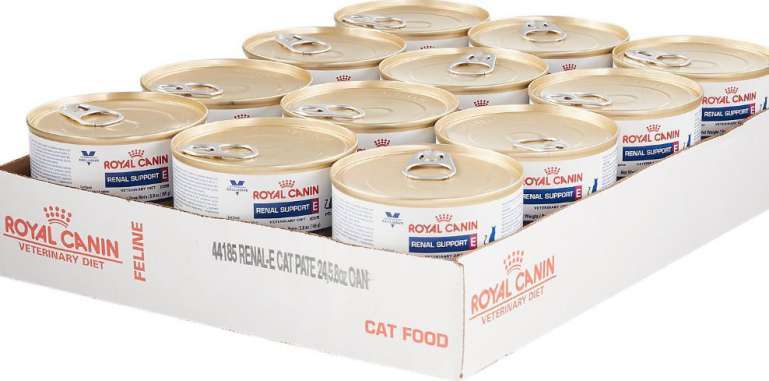Phosphorus (P) is an essential mineral in a cat’s body and the second most abundant after calcium. As an element, it comes in a white and red form. However, this mineral is too reactive to be found in its elemental form.
In a cat’s body, it is found in the form of phosphate (oxidized state) with the bones having about 86% of the total amount and the remaining amount is found in the intracellular and extracellular compartments including in blood plasma as inorganic or organic phosphate (bound to any molecule that has carbon or a phosphate ester) form.
The plasma or serum inorganic phosphate accounts for about 1% of the total phosphate in a cat’s body, notes the Cornell University College of Veterinary Medicine. However, the level will be higher in serum since, during clotting, the platelets release some.
The inorganic form (salt of the phosphoric acid not bound to molecules that have carbon) is either diphosphate (H2PO4–) or monophosphate (HPO42-) and they reflect the amount of phosphate available for immediately to use by cells.
Sources

Some of the natural sources of phosphorus include chicken, turkey, pork, organ meats, meats, fish (including salmon, carp, pollock, scallops, catfish, crab, crayfish, etc.), dairy, nuts, whole grains, quinoa and amaranth, beans, tofu, lentils, and soy.
However, the vegetable and cereal sources are less bioavailable, making them not a good option for your feline friend.
Another source of this mineral is inorganic phosphate salts including those of sodium, calcium, ammonium, and potassium.
Finally, its level in a cat’s body depends on absorption, phosphate level in diets, and the role of parathyroid hormone and calcitriol (bioactive form of vitamin D).
Key functions
Phosphorus has several important roles in a cat’s body which include the following:
- It binds with calcium forming hydroxyapatite which forms part of bones and teeth structure.
- It is important in cell membrane formation i.e., as phosphoproteins and phospholipids and it also helps in cell signaling.
- It is required energy metabolism, i.e., it helps in making adenosine triphosphate (ATP).
- It forms part of the genetic carrying material (DNA and RNA) as well as other major molecules including proteins needed for body growth, maintenance as well as in the repair of tissues and cells.
- It forms part of some enzyme cofactors
Owing to these many functions, cat’s need phosphorus but it should be supplied in required amounts. Very little amounts will lead to deficiency symptoms or hypophosphatemia while excess will result in hyperphosphatemia.
Amount of phosphorus required
According to the National Research Council of National Academies, the required amount is 0.16 g daily for a cat that needs 250 calories daily and weighs about 9 pounds.
The Association of American Feed Control Officials (AAFCO 2014), notes that cats need a minimum of 2.0g for growth or reproduction and 1.25g for adult maintenance per 1000 calories of food.
Finally, it is worthwhile noting that “in aging animals, phosphorus intake should be reduced as it might aggravate chronic renal failure” notes Royal Canin.
Deficiency signs of phosphorus in cats
Since they are obligate carnivores, most of their diets whose larger percentage is proteins have a substantial amount of phosphorous and a deficiency is uncommon unless there is a problem with absorption or if you go for diets that lack enough amounts.
Also, reduced kidney reabsorption or shifting of extracellular phosphate into cells (translocation or transcellular movement) can lead to hypophosphatemia (low levels of ionized phosphate in blood plasma).
Some of the deficiency signs you may notice include
- Hemolytic anemia where red blood cells will be broken down (hemolysis)
- Urine color becomes red or dark red due to hemolysis that produces hemoglobinuria.
- Locomotor disturbances
- Metabolic acidosis where the body produces too much acid or the kidney does not remove enough of the acid.
- Permanent hind legs flexion
- Lethargy
We will cover more as we look at feline hypophosphatemia where will also cover treatments or how to manage this condition.
Hyperphosphatemia in cats
High phosphate level in cats (inorganic) is not a problem of healthy cats that feed on their typical diets since in such a case, they will be able to keep the calcium and phosphate homeostasis.
However, conditions such as kidney and thyroid disease, bone tumors, osteoporosis, excessive amounts in diets, vitamin D over-supplementation (hypervitaminosis D) could be responsible for hyperphosphatemia. We will discuss more on hyperphosphatemia in cats in a different post.
Phosphorus levels in cat food and cat food phosphorus chart
Since bones, kidney, and intestines are involved in the handling of phosphate as well as parathyroid hormones, calcitriol and fibroblast growth factor 23, any disorder, factor or condition that affect these controlling factors may alter a felines ability to regulate it in their body.
Why should you know phosphorus level in cat diets? It is important. For instance, in case of feline renal disease, you need to go for low phosphorus food for cats with kidney disease and to do so, you need to know amounts of not only this mineral but also calcium, fats, proteins, and calorific value.
If you need information such as phosphorus content in cat food or charts, some of the valuable sites where you can get this information include The Cat Food – Phosphorus Ascending Order and one on Nutritional Composition compiled by Lisa A. Pierson, DVM in 2012 using data from various pet food manufacturers. Further details can also be found at Nutritional Composition — sortable charts.
There is a more recent version prepared in 2017 which is sortable and has filters.
If you want to search for specific foods, you can make use of the United States Department of Agriculture data.
Finally, if you use canned food, the US canned cat food data covering some therapeutic diets for CKD and standard diets will be helpful.
Thank you for visiting.
